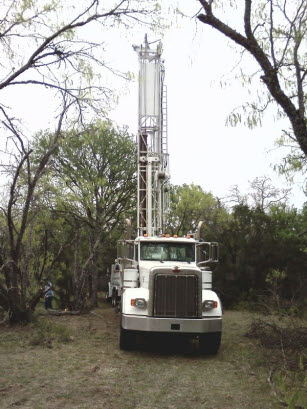Possible causes: ants, bad breaker, or power problems. Locate the control center. Check power to pressure switch located at pressure tank above pressure gauge. Check overloads under control box; you should have 1 or 2 red overload buttons that can be tripped to restart the pump and motor.
If you have low pressure at the house, check water pressure at the well. If pressure is low at the well, then you probably need a service call. If you have low pressure at the house, but good pressure at the well, then check any in-line filters you have between the house and well.
If water is spraying out of pop-o$ valve at the top of the well-head, then turn the power o$ and call for service. Select a driller that is well established. This can be very important when trying to obtain records concerning your well, extended warranty, or pump in the future.
Before You Drill
When you are ready to have an estimate faxed or mailed, please contact us to provide information regarding your property. With decades of drilling experience in Central Texas, we should be able to give you an idea as to the formation and common well depth in your area, which is very useful in providing you with an accurate estimate.
Important: Once we have information about your property, we can also assist or direct you in obtaining any permits that may be required in your area.
When you receive your estimate, call to schedule a meeting at the property so our employees can help you “spot your well site”. When spotting your well, we will be able to pick the most appropriate path leading into your property. Any necessary land clearing can also be discussed at this time.
Please keep in mind that when spotting wells, certain state and county laws apply, such as the well must be:
- 50 feet from from property line
- 100 to 150 feet from any drain fields depending on the county and district
- 50 feet from septic tank
Necessary cementing typically varies from 20-100 feet.

